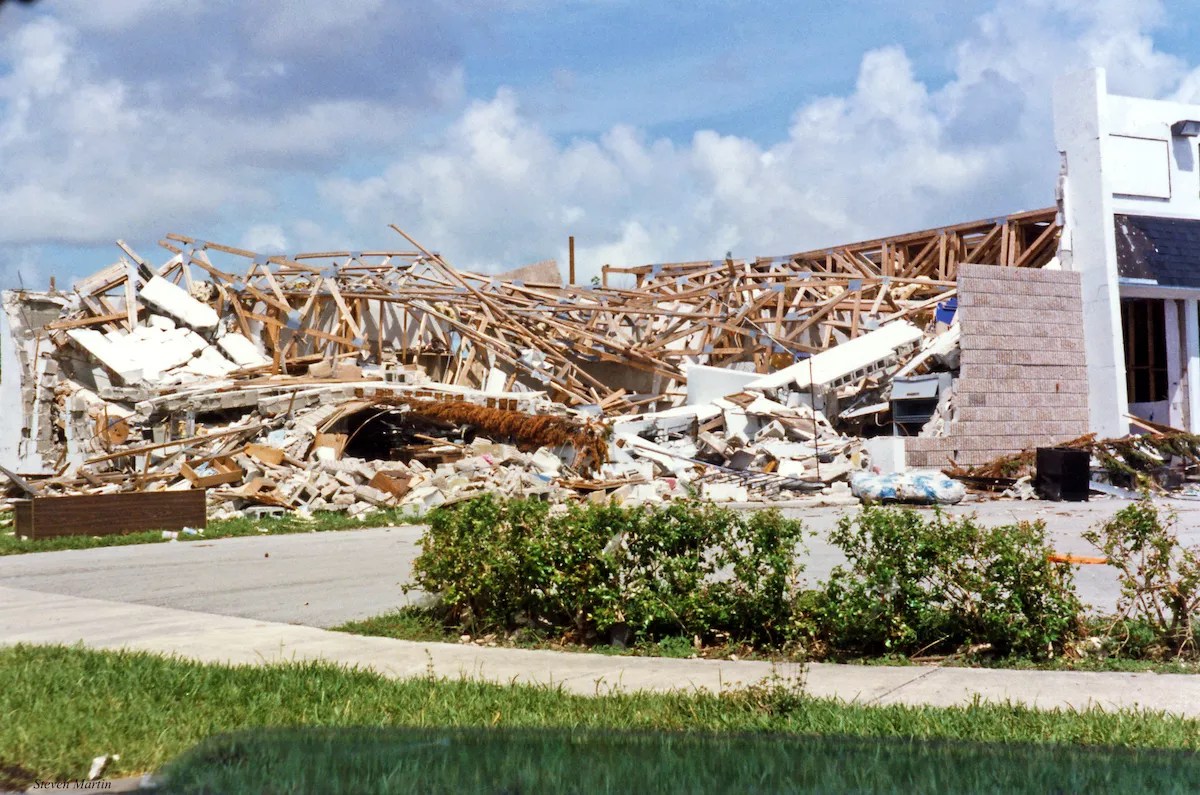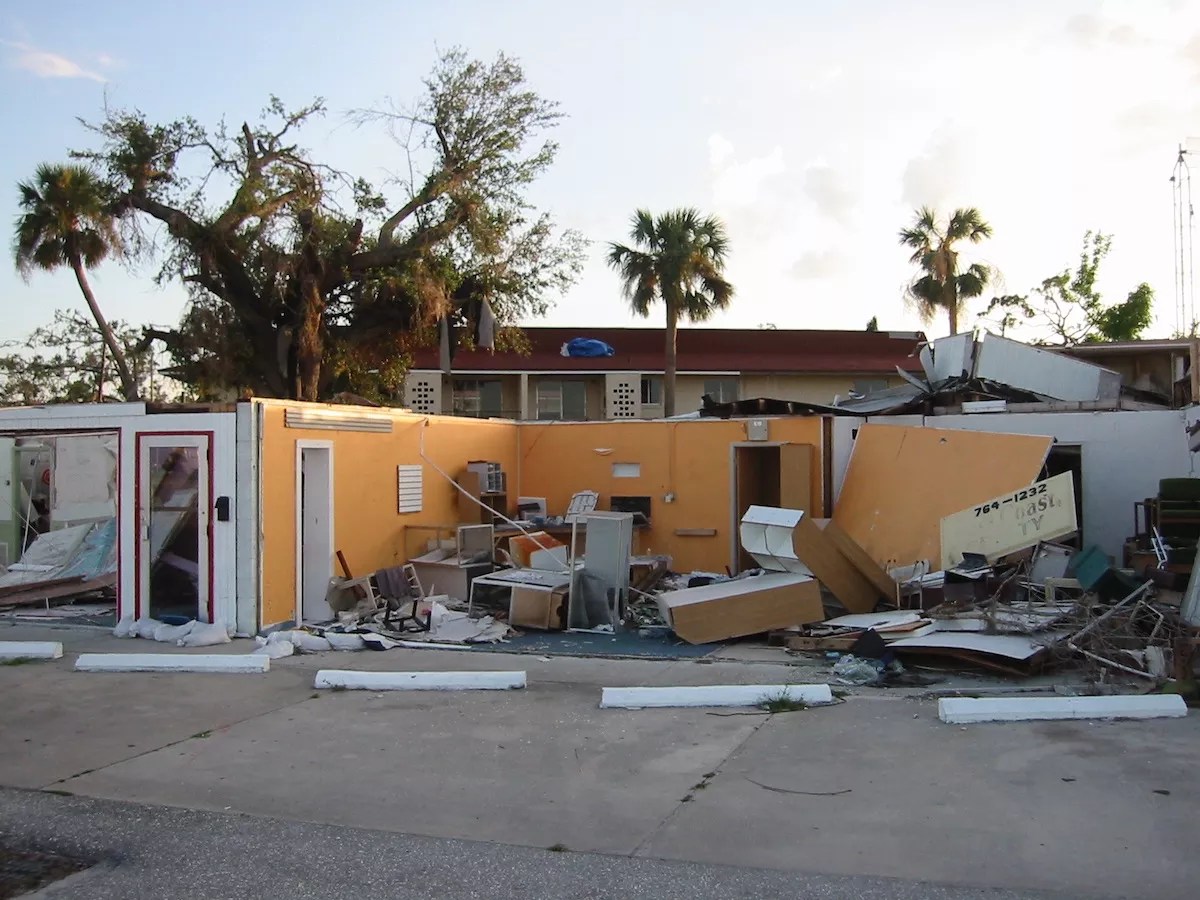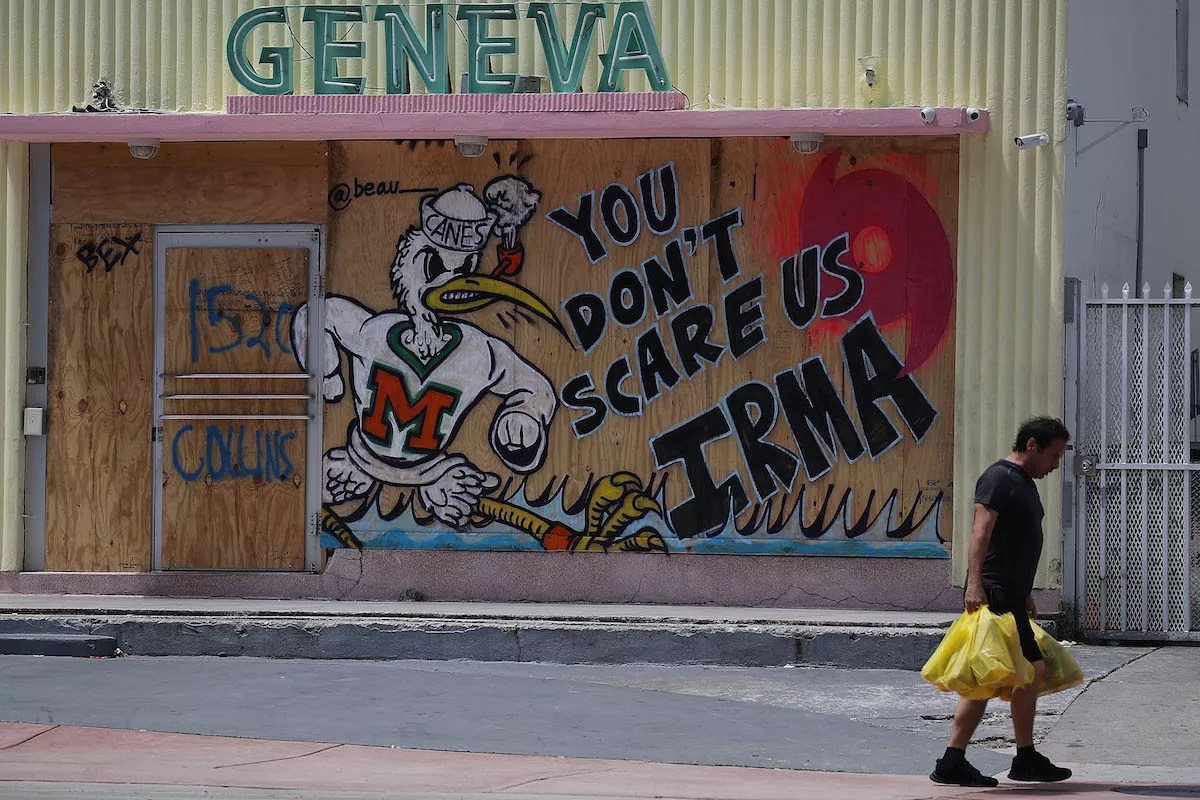
Photo by Win McNamee/Getty Images

Audio By Carbonatix
Back in May, the good folks at the National Oceanic and Atmospheric Administration warned us that Florida’s 2024 hurricane season could be among the most active ever.
In its brutal outlook, the NOAA predicted a significantly “above-normal” 2024 Atlantic hurricane season, projecting anywhere from 17 to 25 total named storms, four to seven of which are forecast to become major Category 3 or higher hurricanes.
As South Florida prepares for another busy hurricane season, memories of the region’s worst storms still loom large.
The area has borne the brunt of some of the most devastating tropical cyclones on record, in some cases experiencing multiple powerful storms in a single Atlantic hurricane season. Southern counties in Florida rank second only to Northwest Florida in terms of Sunshine State regions most prone to hurricane strikes.
In chronological order, here are the six most destructive hurricanes to have hit South Florida, including the Miami metro area and southern Gulf Coast, since the era of named storms began.

Downed trees and a wrecked building in Islamorada in the aftermath of Hurricane Donna in 1960.
Photo by American Red Cross
Hurricane Donna (1960)
Donna spawned severe flooding in the Florida Keys and destroyed thousands of homes in Florida.
After making landfall in the state with 145 mph winds and generating a 13-foot storm surge in Marathon, the storm tracked west toward Naples and Fort Myers. Six people drowned in the storm waters from the Category 4 hurricane.

A destroyed office building in Homestead.
Flickr via Steve Martin
Hurricane Andrew (1992)
At the time, Hurricane Andrew was the strongest and most damaging hurricane on record in the United States.
After it walloped the Bahamas and Louisiana, it wreaked havoc in southern Miami-Dade County, where it made landfall as a monster Category 5 hurricane – tearing down an estimated 49,000 homes and damaging roughly another 108,000. Homestead was the hardest-hit community, with more than 99 percent of all mobile homes destroyed.
Most of the damage was attributed to Andrew’s fierce, compact wind field.
The storm killed 15 people in South Florida, and the state suffered an estimated $25 billion in hurricane damage. In terms of property damage, Florida would not see a storm as catastrophic as Hurricane Andrew until Hurricane Irma struck 25 years later.

The remains of a strip mall in Punta Gorda, Florida post-Charley.
Flickr via David Hilgart
Hurricane Charley (2004)
Charley, one of the strongest hurricanes to ever hit the United States, slammed southwest Florida as a Category 4 hurricane and devastated places like Captiva Island, Cayo Costa, and Port Charlotte.
It was part of the nightmarish 2004 Atlantic hurricane season, which spawned Charley, Jeanne, Ivan and Frances, all of which hit Florida at some point in their lifecycle. South Floria homes were repeatedly ripped apart and flooded by the barrage.
Hurricane Charley, for its part, left more than 1 million people without electricity and caused an estimated $16 billion in property damage, wrecking thousands of homes. Nine people in Florida died as a direct result of the storm.

Hurricane Wilma (2005)
Wilma made landfall in South Florida as a Category 3 hurricane, with winds reaching speeds of up to 100 miles per hour.
The storm devastated Broward and Palm Beach counties, leaving a trail of destruction that included downed power poles, shattered windows in high-rise buildings, and homes stripped of their roofs.
The estimated cost of the damage in the U.S. was $20 billion.

Hurricanes are no joke — take the warnings seriously.
Photo by Joe Raedle / Getty Images
Hurricane Irma (2017)
After a lull of 12 years with no direct hits from hurricanes in South Florida, Irma raked through the region with fierce winds and pounding rain.
The storm, which made landfall in the Florida Keys as a Category 4 storm, wiped away homes and pummeled communities in the Big Pine Key area with 130 mile per hour winds. It even toppled South Florida’s tallest tree.
According to the Monroe County Medical Examiner, three people in the Florida Keys drowned during the hurricane and another 14 people died due to hurricane-related causes, including being unable to obtain life-saving medical treatment.
The storm was a beast by any measure. Not only did it pack extreme winds, but its sheer size spanned the width of the state: at one point, its tropical-storm-force winds extended more than 400 miles from its center. It knocked out electricity to more than half of the state’s households in one of the worst natural-disaster-spawned power outages in the nation’s history.
More than 80 deaths in Florida were linked to Irma. The hurricane resulted in an estimated $50 billion in total damage in the Southeastern U.S.

Members of Florida Task Force 1 rescue stranded residents from barrier islands on Florida’s west coast on September 30, 2022, after the region was decimated by Hurricane Ian’s storm surge.
Photo by Miami-Dade Fire Rescue
Hurricane Ian (2022)
Ian is the deadliest hurricane on record in Florida in the era of named stories.
More than 40 people, most in Lee County, drowned in the massive storm surge created by the hurricane when it moved onshore on the Gulf Coast. City blocks were inundated with a wall of water 10 feet deep in some areas, and entire island communities in Collier and Lee counties were razed.
Those who did not evacuate and survived the storm on the barrier island of Sanibel were cut off from the mainland for days after the hurricane brought down a section of the Sanibel Causeway. Hundreds of people across Florida had to be rescued from high waters and communities cut off by the destruction.
“Some of the damage was almost indescribable… to see a house, just sitting in the middle of Estero Bay,” Gov. Ron DeSantis said upon touring the area.
The storm weakened inland but continued to cause disastrous flooding as it made its way toward Northeast Florida.
Sixty-six deaths were linked directly to the storm, and it caused $110 billion in property damage, including figures from South Carolina, where it made landfall after moving offshore of Florida.